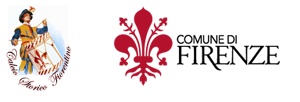Report
Kemari is an ancient Japanese Football game resembling hacky-sack or keepy-uppies. The aim of the players is to keep the ball in the air by kicking it with the leg or feet, either to another player or to themselves. It is the achievement of the highest artistic performance that is important rather than winning. It is played by 6-8 players and is not limited by time. In the Modern Era it is usually stopped by one of the players selected as the game leader and resumed after a break. Each game usually lasts 10-15 minutes. It is played by both men and women and is considered a national sport, enjoyed by families, three generations sometimes playing at the same, which is not unusual to see. It dates from the Heian Period (794-1195).
Video of Kemari 201
Please Note: this game gets off to a slow start, like a Japanese Tea Ceremony. Jump to about 2 minutes in to see how similiar to the modern game of hacky sack it is.
References
Bibliography
[1] Wojciech Liponski (2003) “Kemari” World Sports Encyclopedia pg. 316. MBI Publishing, St. Paul. Minnesota, USA.
[2] Encyclopaedia Brittanica (2021) Kemari [Internet] Available from: https://www.britannica.com/topic/kemari [Accessed 18 May 2021]
Social Media
[3] You Tube zaicushastyj Channel (2011) Kemari (Japanese: 蹴鞠) is a form of football that was popular in Japan during the Heian Period. Kemari has been revived in modern times. This game was played in Sniramine-jingu, Kyoto [Internet] Available from: https://www.youtube.com/watch?v=1MGp_sQHQLc [Accessed 18 May 2021]
Acknowledgements
Thanks to Caoilfhionn Nic Fhearai
About this document
Researched, compiled and written by Enda Mulcahy for the
Eirball | Irish North American and World Sports Archive
Last Updated: 18 May 2021
(c) Copyright Enda Mulcahy and Eirball 2020
You may quote this document in part provided that proper acknowledgement is given to the authors. All Rights Reserved.
